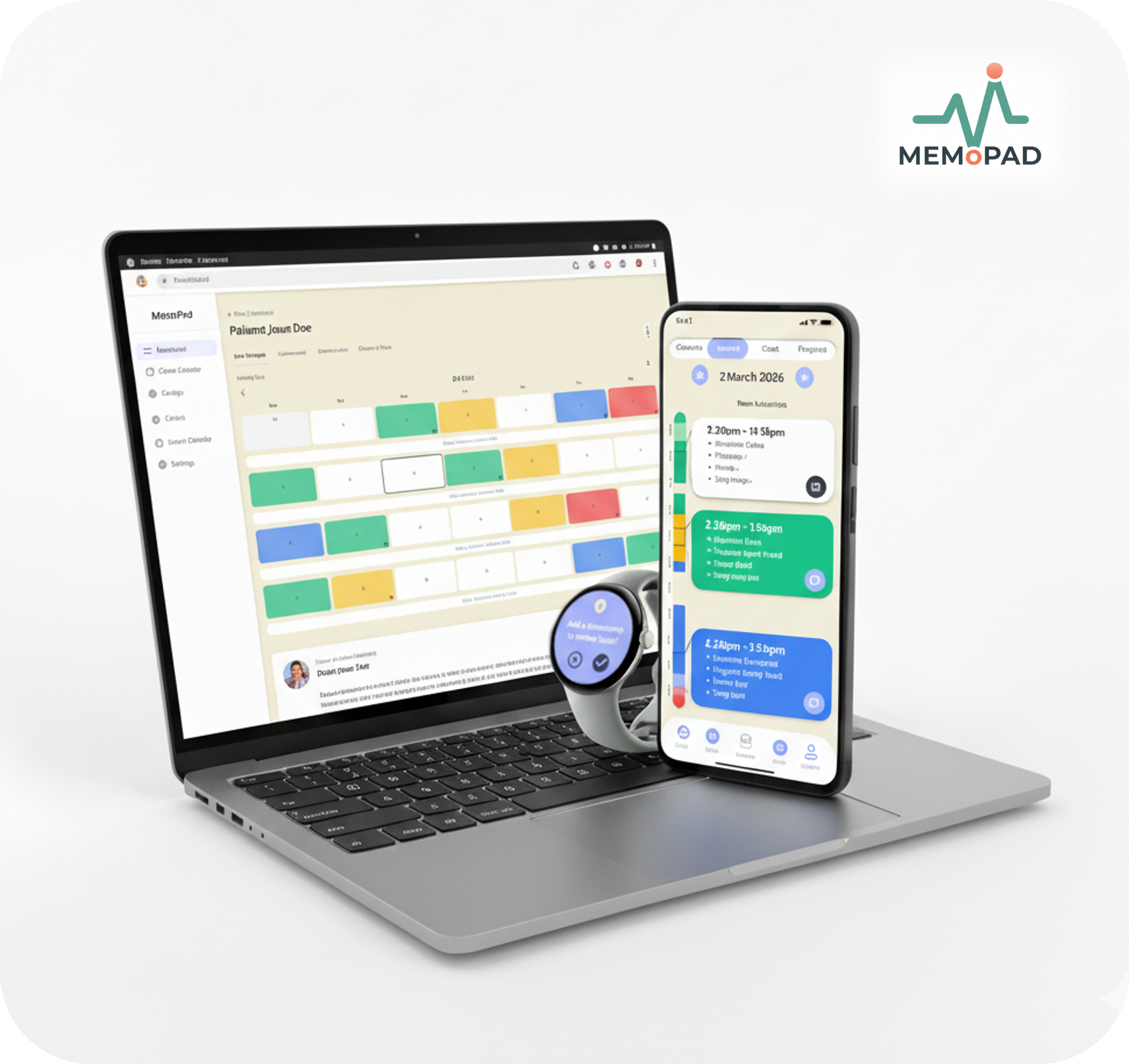Mobile App for Personal Use
A brief trailer showcasing the core features for mood logging, data visualization, and contextual note-taking.

I'm Luigi A. Moretti, PhD candidate at UWE Bristol, former healthtech founder, medical doctor. I'm developing emotion monitoring technology that helps patients understand themselves and clinicians provide better care. Using consumer wearables like the Google Pixel Watch 2, MEMoPAD bridges clinical research and real-world deployment.
Wearable emotion monitoring for anxiety disorders (GAD, PTSD, OCD, PD, SAD)
Google Pixel Watch 2 sensors (cEDA, PPG, skin temperature) + self-reported data on the mobile app
3.5y PhD scholarship and £7,500+ from NHS BNSSG ICB and UWE Bristol
Previous attempts to integrate structured data in mental health have faced persistent challenges, including the complexity of multimodal data, the social stigma that delays help-seeking, and difficulties in data interpretation which can hinder user engagement. We believe focusing on emotion can mitigate these issues by providing a universally understood common ground.
Commercially available wearable devices feature increasingly sophisticated sensors at affordable prices, without the stigma associated with medical-looking hardware. Our approach focuses on data collected from consumer wearables and mobile phones to capture longitudinal and contextualized data through multimodal affective computing.
Our goal is to co-design a digital tool that provides clear, continuous, and interpretable emotion data. We aim to help users understand themselves better, foster proactive self-management, and facilitate deeper, more effective conversations with their clinicians, ultimately improving clinical pathways for anxiety care.
The MEMoPAD project directly supports the UK's 10-Year Health Plan by developing the framework needed to integrate wearable devices and AI into clinical pathways. By empowering patients with their own data, we enable a more personalized approach to care. This focus on prevention addresses a key challenge identified by our co-design participants: supporting individuals in seeking help for the first time. By improving mental well-being, our work also contributes to the wider societal benefit of boosting workforce productivity and supporting people's mental health in daily as well as in challenging scenarios.
Explore our progress through the latest video trailer of the mobile app and the interactive prototype of our web app for clinicians.